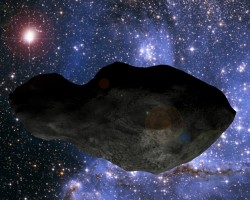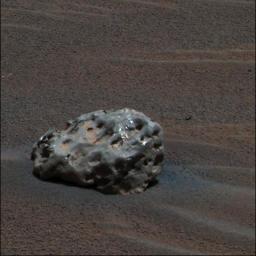Researchers from Germany compared the ratio of iron-related materials in the earth's crust in stones from impact craters on the moon, from ordinary meteorites and meteorites from Mars and came to a conclusion as to the origin of these metals, including iridium and platinum

Meteorites and asteroids from the inner solar system may be responsible for the vast reserves of precious metals on Earth such as platinum and iridium. These metals reached the earth towards the end of the great bombardment period, about 4 billion years ago.
Dr. Gerald Schmitt of the University of Mainz, Germany, calculated that about 160 metallic asteroids with a diameter of about 20 kilometers on average, would be enough to provide the concentration of these metals, called elements with a strong affinity for iron Highly Siderophile Elements (HSE) found in the crust Earth. "A key factor in understanding the origin of the planets is the knowledge about the prevalence of the HSE in the crust and mantle of the Earth, Mars and the Moon. We found an almost uniform prevalence in the distribution of halo materials in all the samples we took from the upper part of the Earth's crust. Comparing them with the values of these metals in meteorites raises the likelihood that the origin of the metals is cosmo-chemical." Schmidt said.
Schmidt and his colleagues have spent the last 12 years analyzing the concentrations of iron-related metals in meteorite impact areas around the world, as well as sampling the Earth's crust and mantle. In addition, he compared the data from Earth with data from lunar rocks taken from craters on the Apollo missions, and from meteorites from Mars, which are estimated to have originated from the crust and mantle of Mars.
When the Earth was formed, the heavy elements, including the HSE that were in it sank and formed the metallic core consisting mainly of iron and nickel. The HSEs were added again later by meteorite impacts that formed a layer of materials on the Earth's surface after the formation of the core, about 20-30 million years after the formation of the planet. It is possible that these materials are also related to the collision of the young Earth with a planet the size of Mars, a collision that caused the formation of the moon.
However, Schmidt believes that the meteorites responsible for the iron-related elements on Earth are meteorites that were composed of iron and rock, which are consistent with the theory that at the beginning of the solar system, asteroids orbited in the space between Mercury and Venus.

A different class of meteorites had the element ratio characteristics of the HSE formed at the dawn of the solar system. Chondrites are rocky meteorites that represent the primordial material from the beginning of the solar system and meteorites that contain iron or iron and stone, which are fragments of large asteroids that were once hot enough to form a metallic core. These asteroids almost certainly formed in the inner solar system.
The proportion of HSE found in the Earth's crust is more similar to that of iron or iron-rock meteorites, and Schmitt believes that these meteorites came from the inner solar system.
There is still a problem with the theory. Of the 175 known impact craters on Earth, remains of the objects that hit only about 40 have been found, and none of them has been identified as a meteorite formed in the area between the planets Mercury and Venus. Intriguingly, some of the reddening meteorites found in Antarctica, which as mentioned may represent samples of the Martian crust, revealed HSE values reminiscent of the group of metallic and rock-metallic meteorites, and this indicates to Schmidt's knowledge that a similar process occurred on Mars as well.
Dr. Schmidt presented his findings at the European Planetary Science Conference in Münster on September 22.

One response
Wow, he has been researching this topic for 12 years. Well done for the persistence and the new insights.